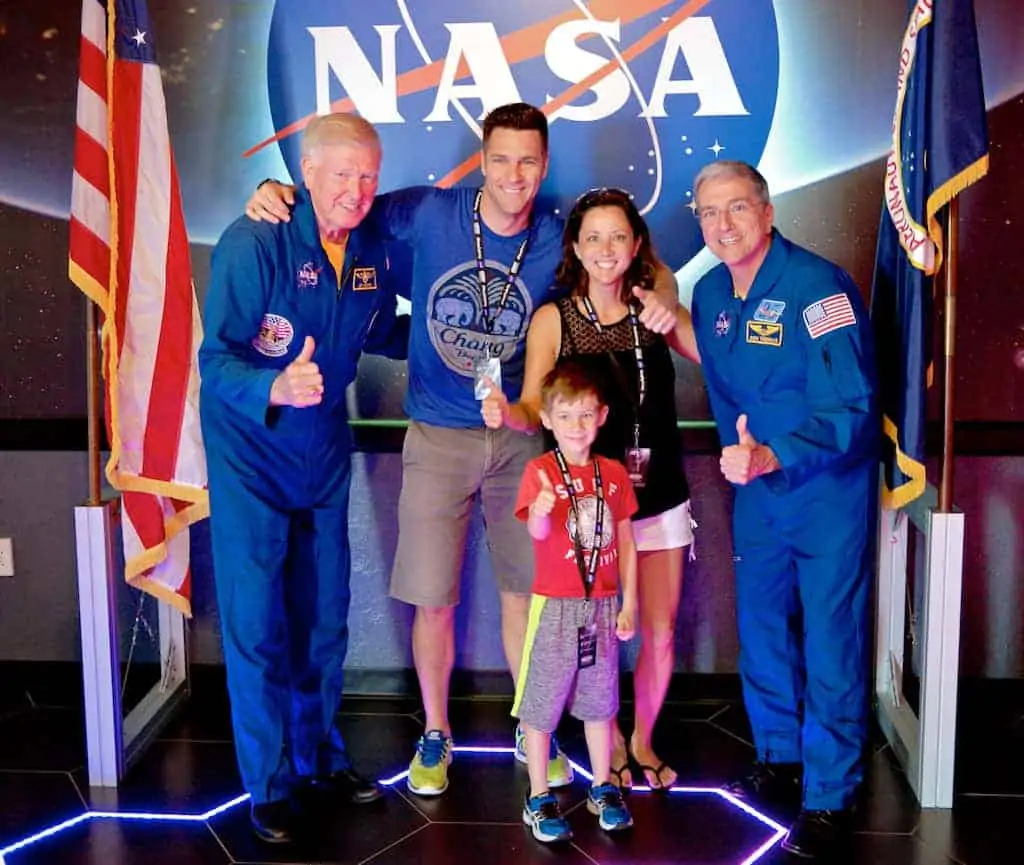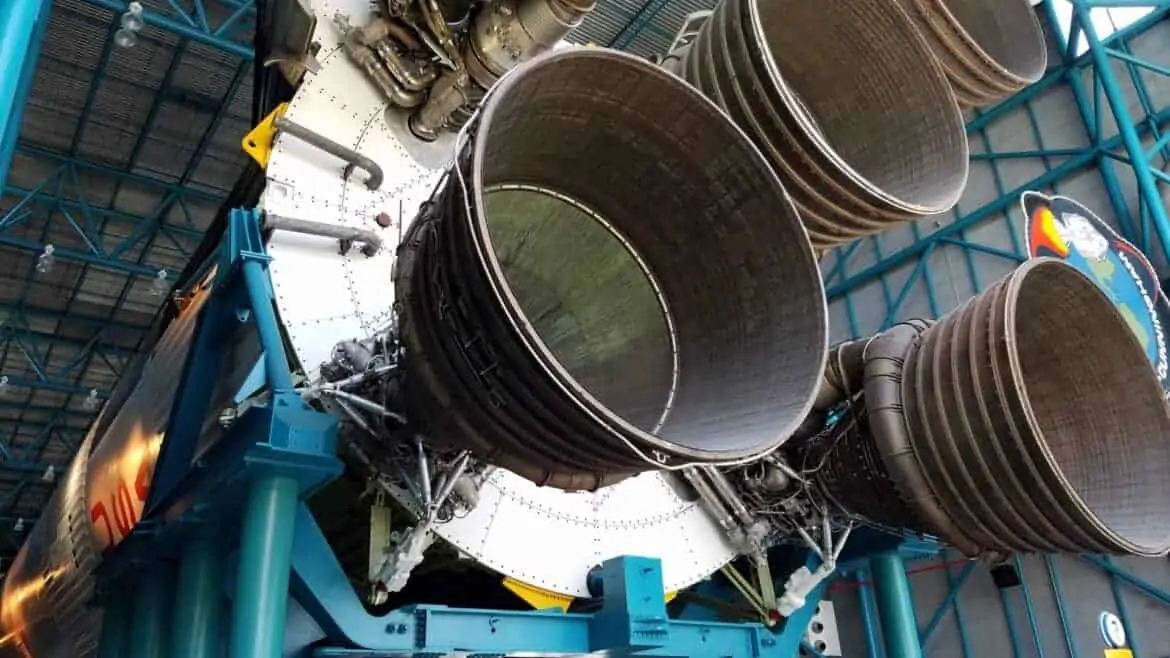My very first “what I want to be when I grow up” was an astronaut. There was something about exploring the unknown that captured my heart. Well, that and a healthy obsession with Buck Rogers, Star Trek, Battlestar Galactica, and Stars Wars.
When the government decided to end the space program a few years back, I was deeply saddened. I, like many others, thought that meant the end of space exploration, but it wasn’t until our recent visit to the Kennedy Space Center Visitor’s Complex in Florida that I realized how wrong I was!
Here are a few enlightening tidbits I learned that hopefully fellow cosmo-nerds will find interesting too.
18 Things You May Not Know About the US Space Program
- NASA, or the National Aeronautics and Space Administration, was created by President Dwight Eisenhower in 1958.
- Astronauts are required to be between 62 and 75 inches tall. The youngest astronaut to date was Sally Ride who was 32 years and 23 days old when she flew in 1983. The oldest astronaut was John Glenn, 77 years old when he flew in 1998.
- We have landed on the moon 6 times and there have only ever been 12 humans to walk on the moon. All of whom were Americans.
- NASA holds 1 in every 1,000 U.S. Patents. Designing spacecraft and getting humans to Earth’s orbit and the Moon means inventing brand new solutions to problems most people haven’t even thought of yet.
- The flag on the Vehicle Assembly Building is 200ft long. Each star is 6 feet across.
- The VAB high Bay doors are the largest in the world (456 feet high) and take about 45 minutes to completely open or close.
- Kennedy Space Center has alligator wranglers on staff due to the local population on site in ponds, etc (All animals on site are protected).
- There’s 40 miles of NASA railroad at Kennedy Space Center.
- NASA plans on sending the new SLS (Space Launch System) rocket to the moon, Mars and even to asteroids. They hope to be able to someday push asteroids out of the way!
- The Space Shuttle Atlantis has traveled 126 million miles over 33 space missions! It cost $450 million per mission to launch a Space Shuttle and they cost approximately $1.7 billion to build.
- The Space Shuttle does zero to 17,000 mph in 8.5 minutes and breaks the sound barrier in less than one minute.
- The big orange tank is an external fuel tank. The two white flanking structures are reusable solid rocket launchers. Each of the boosters carry more than 1 million pounds of solid propellant – equal to that of an atomic bomb. The minimum safe distance from a launch is 3 miles.
- NASA is developing the capabilities needed to send humans to an asteroid by 2025 and Mars in the 2030s. Which makes kids age 6-10 today, prime candidates to be the first astronauts on Mars.
- Just in case life is found on some other planet, NASA actually has an Office of Planetary Protection.
- Why launch from Florida? Cape Canaveral in Florida was chosen as a launch site because its proximity to the equator gives it more linear velocity than any other location in the United States. The Earth rotates towards the east and is “fastest” at its center (Equator) so Florida is the best choice in the US to take advantage of the Earth’s natural rotational speed, thus saving on fuel, rocket power, etc.
- Space capsules are being built to go to the Space Station within 2 years. Boeing CST-100 Starliner.
- Water is used to launch the shuttles to absorb vibrations and sound.
- It’s not possible for a space shuttle to land in rain. If it’s raining the shuttles land in California at Edward’s Airforce Base.
Want to get up close and personal with the US Space Program? Kennedy Space Center Visitor Complex is the only place in the world where you can see the real space shuttle Atlantis, touch a moon rock, meet a veteran NASA astronaut, and get an up-close view of a real Saturn V moon rocket.
Kennedy Space Center is named after President John F. Kennedy and has been pivotal to space exploration, serving as America’s spaceport for all of the federal government’s manned spaceflights since the late 1960’s when the US became the first (and only country) to put a man on the moon.
Spread across 219 square miles on Merritt Island, just northwest of Florida’s Cape Canaveral, the Kennedy Space Center has a dedicated Space Center Visitor Complex to welcome about 1.5 million visitors every year to view it’s exhibits, films, meet astronauts, space shuttles and more.
The Visitor Complex opens at 9 am each day and daily admission cost $50 per adult and $40 per child. Visitors can personalize their experience with special tours or lunch with an astronaut for additional fees.
Thank you to Kennedy Space Center Visitor Complex and Kia Motors America for our ride for the week, the 2016 Kia Sedona, and facilitating our visit. All opinions remain my own.



I never heard of the US space program, thanks for sharing. I learned a lot!